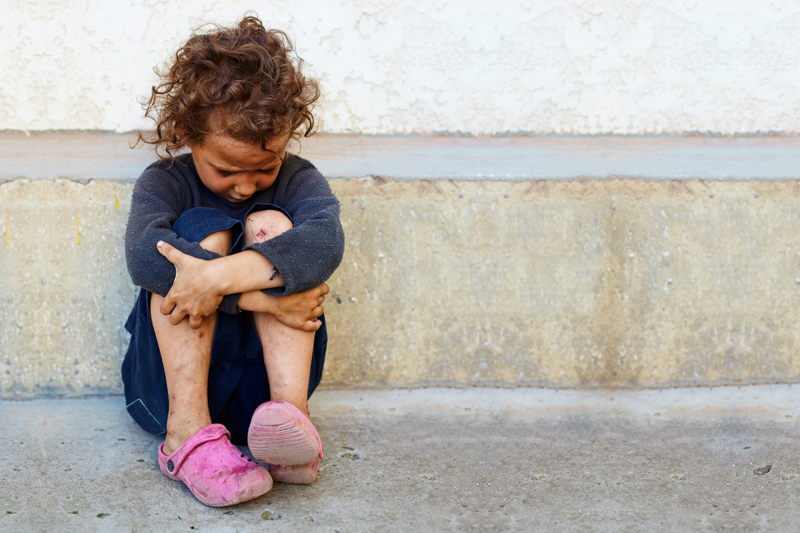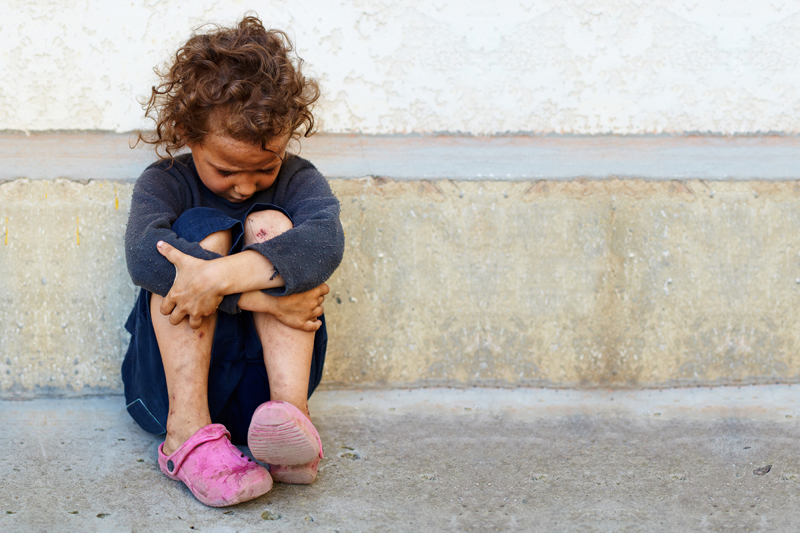Digital Pictures - A Life Saving Tool for Missing Children

Pictures are milestones in a child’s life. A good picture is a good memory to talk about during those times friends or families gather at the kitchen table over the holidays or on the back porch for a BBQ on a hot summer day. Yet, a great picture is worth a thousand words as the old saying goes and this saying is never truer than when a child is missing or has been abducted from his or her family. Suddenly, a family picture has become a life saving tool for a child and the family behind the photo.
A recent and clear depiction of a child’s face is extremely important when a child is missing. The clarity of the portrait given to law enforcement can make or break whether someone will identify a child seen in public. Especially, in cases where a stranger may have abducted a child it is imperative to issue an accurate and timely description of the child along with the child’s image to the public as quickly as possible. The time it takes to release the child’s information and photograph can become a matter of life or death.
A digital camera is the best way to keep up-to-date pictorials of children. With a digital camera, photographs can be taken quickly, easily, and inexpensively at timed intervals, preferably every 3 to 6 months, but no longer than one year apart. Children change a great deal in a year’s time. The best part about digital cameras are that the images can focus specifically on birthmarks or features that illustrate how a child stands out in a crowd.
For instance, the family’s Irish red hair, which once was the constant point of family fun for the oldest son, may now be the one identifying asset that saves the child’s life. A café au lait, or brownish colored birthmark, noted on a child’s neck, the size of a half-dollar, may be the clue that gives a hesitant citizen the extra boost of confidence to call local law enforcement regarding the little boy next door who looks just like that boy on the missing child poster.
Inexpensive digital cameras and cell phone cameras even take decent representations of individuals by today’s standards of the technical rage. Keep final images in a secure, easily assessable place, like the family computer. This allows quick retrieval of the images by anyone the family instructs how to find the photos in the event of an emergency, allowing law enforcement faster access to the child’s pictures.
If you carry a digital camera with you on family outings, take individual portraits of your children as you walk out the door. Take a full-length depiction of each child, including a close-up of the child’s face, for reference. This way you have the most up-to-date images of your child, including their current hair color, hairstyle and what clothes they are wearing on the outing. The child’s information is now stored inside your digital camera, and if needed can be viewed on the viewfinder if necessary by anyone helping you look for your child. A picture of the lost child is definitely better than to try to conjure up an image of a five-year-old blonde haired, blue-eyed boy wearing blue jeans and a white t-shirt.
Do not waste time looking for a missing child by yourself. If you are in a public place, ask the nearest employee to issue a Code Adam, which is a missing child alert used in most public places today. The Code Adam came about to honor the memory Adam Walsh who disappeared from a Florida Sears store while shopping with his mother Reve Walsh. Mrs. Walsh spent close to two hours looking for Adam by herself before Sears’s employees called police.
When a Code Adam comes over the store overhead system all store employees stop their regular duties, listen to the description of the lost child, and begin looking for the missing child. In addition, employees watch the exits, and check customer’s packages for the missing child. In ten minutes if the child still is not located, store employees call law enforcement in to help search. If someone other than the child’s parent tries to leave the store with the child, employees are to get a good description of the person, and watch which direction the perpetrator exits the store. Employees are not to endanger himself, herself, or the child by trying to detain the kidnapper.
Finally teach children your cell phone number, and not your home phone number. As my intelligent little sissy said “I will not be home waiting by the phone if I lose my child. I will be out and about looking for them.” This advice is the best I have ever received as a mom! Also, teach children how to dial 911 and zero for assistance on payphones and cell phones. Remember, many homes no longer have a traditional phone installed. Children need to learn how to dial 911 and hit the green “send” button on a cell phone in the event of an emergency. Show them how the buttons work on a cell phone and have them practice on a live cell phone by calling your cell or home phone numbers. Then practice dialing 911 on a cell phone with out a battery. Times are changing!
Until next time, I send you Angels, angels above you, angels below you, angels all around you to keep you and your children safe. May our angels be especially attentive to the needs of those in Minnesota tonight as loved ones search for their missing loved ones and try to make sense out of a tragedy that as one watches happen on the security video, finds incredibly hard to grasp.
A recent and clear depiction of a child’s face is extremely important when a child is missing. The clarity of the portrait given to law enforcement can make or break whether someone will identify a child seen in public. Especially, in cases where a stranger may have abducted a child it is imperative to issue an accurate and timely description of the child along with the child’s image to the public as quickly as possible. The time it takes to release the child’s information and photograph can become a matter of life or death.
A digital camera is the best way to keep up-to-date pictorials of children. With a digital camera, photographs can be taken quickly, easily, and inexpensively at timed intervals, preferably every 3 to 6 months, but no longer than one year apart. Children change a great deal in a year’s time. The best part about digital cameras are that the images can focus specifically on birthmarks or features that illustrate how a child stands out in a crowd.
For instance, the family’s Irish red hair, which once was the constant point of family fun for the oldest son, may now be the one identifying asset that saves the child’s life. A café au lait, or brownish colored birthmark, noted on a child’s neck, the size of a half-dollar, may be the clue that gives a hesitant citizen the extra boost of confidence to call local law enforcement regarding the little boy next door who looks just like that boy on the missing child poster.
Inexpensive digital cameras and cell phone cameras even take decent representations of individuals by today’s standards of the technical rage. Keep final images in a secure, easily assessable place, like the family computer. This allows quick retrieval of the images by anyone the family instructs how to find the photos in the event of an emergency, allowing law enforcement faster access to the child’s pictures.
If you carry a digital camera with you on family outings, take individual portraits of your children as you walk out the door. Take a full-length depiction of each child, including a close-up of the child’s face, for reference. This way you have the most up-to-date images of your child, including their current hair color, hairstyle and what clothes they are wearing on the outing. The child’s information is now stored inside your digital camera, and if needed can be viewed on the viewfinder if necessary by anyone helping you look for your child. A picture of the lost child is definitely better than to try to conjure up an image of a five-year-old blonde haired, blue-eyed boy wearing blue jeans and a white t-shirt.
Do not waste time looking for a missing child by yourself. If you are in a public place, ask the nearest employee to issue a Code Adam, which is a missing child alert used in most public places today. The Code Adam came about to honor the memory Adam Walsh who disappeared from a Florida Sears store while shopping with his mother Reve Walsh. Mrs. Walsh spent close to two hours looking for Adam by herself before Sears’s employees called police.
When a Code Adam comes over the store overhead system all store employees stop their regular duties, listen to the description of the lost child, and begin looking for the missing child. In addition, employees watch the exits, and check customer’s packages for the missing child. In ten minutes if the child still is not located, store employees call law enforcement in to help search. If someone other than the child’s parent tries to leave the store with the child, employees are to get a good description of the person, and watch which direction the perpetrator exits the store. Employees are not to endanger himself, herself, or the child by trying to detain the kidnapper.
Finally teach children your cell phone number, and not your home phone number. As my intelligent little sissy said “I will not be home waiting by the phone if I lose my child. I will be out and about looking for them.” This advice is the best I have ever received as a mom! Also, teach children how to dial 911 and zero for assistance on payphones and cell phones. Remember, many homes no longer have a traditional phone installed. Children need to learn how to dial 911 and hit the green “send” button on a cell phone in the event of an emergency. Show them how the buttons work on a cell phone and have them practice on a live cell phone by calling your cell or home phone numbers. Then practice dialing 911 on a cell phone with out a battery. Times are changing!
Until next time, I send you Angels, angels above you, angels below you, angels all around you to keep you and your children safe. May our angels be especially attentive to the needs of those in Minnesota tonight as loved ones search for their missing loved ones and try to make sense out of a tragedy that as one watches happen on the security video, finds incredibly hard to grasp.
You Should Also Read:
Code Adam
Amber Alert - How to Find Missing and Abducted Children?
Digital Cameras Help Keep Children Safe

Related Articles
Editor's Picks Articles
Top Ten Articles
Previous Features
Site Map
Content copyright © 2023 by Erika Lyn Smith. All rights reserved.
This content was written by Erika Lyn Smith. If you wish to use this content in any manner, you need written permission. Contact Erika Lyn Smith for details.



